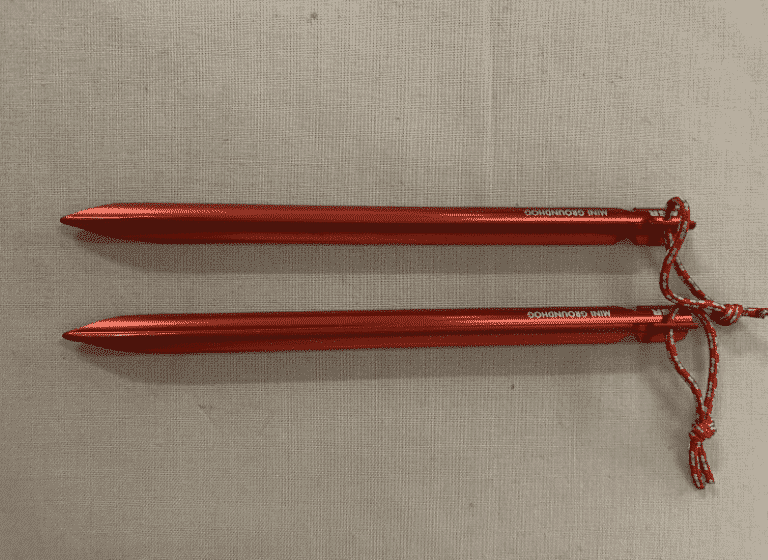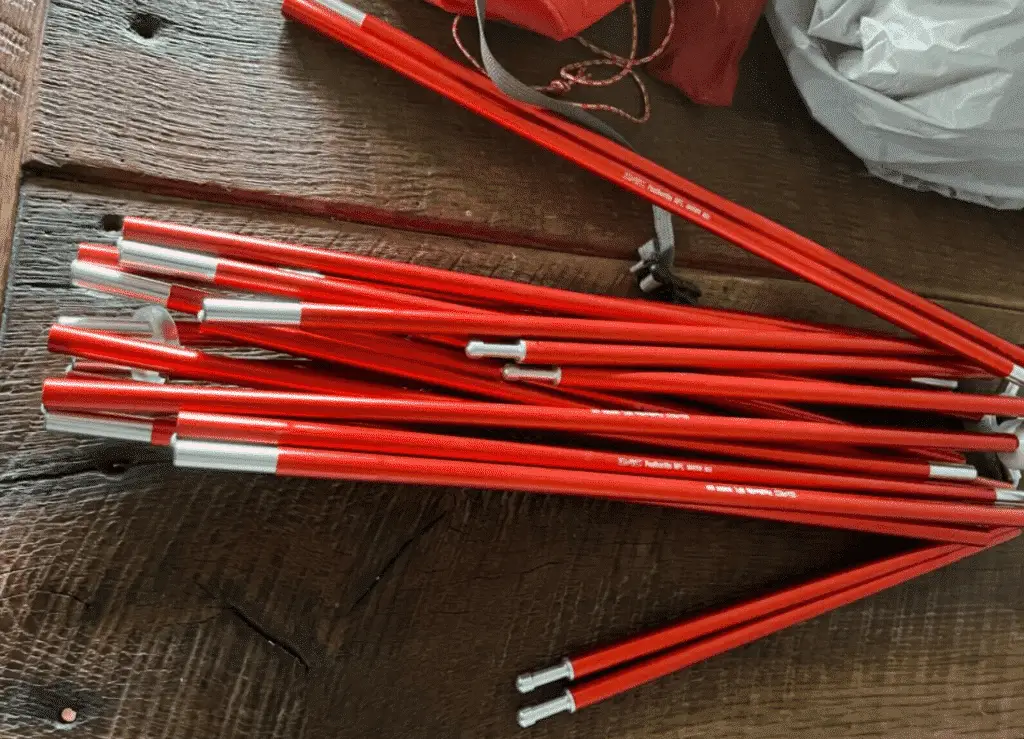Trying to cut weight from your pack is never easy, but I like to start by taking inventory of the heaviest items in my pack. Next to your food/water, your tent is usually at the top of the list. Upgrading to a lightweight backpacking tent can cut a lot of weight, but what qualifies as lightweight?
How much does a lightweight tent weigh? Solo backpackers should look for lightweight tents that weigh less than 4lbs. You can save some weight by sharing with a partner. With multiple people you should aim for less than 2lbs per person to be considered lightweight and under 1lb per person for ultralight.
There are lots of ways to save weight when picking out a tent. You can shave weight by choosing lightweight poles, swapping/ditching tent stakes, and looking at compact designs. Keep reading to learn how I shave weight off my tent.
What Is Considered a Lightweight Tent?

Personally, I live by a simple rule. As a solo backpacker I recommend buying a tent that’s less than 4lbs to be considered lightweight and under 2lbs to be considered ultralight. Multiple people should aim for less than 2.5 lb per person. You can save a lot of pack weight by sharing a tent and other supplies. Just make sure each person is carrying the bare essentials for survival.
To calculate whether a tent is lightweight you need to take the overall weight and divide it by the number of people that are using it. Remember that when you’re calculating the weight of a tent, you need to look at how many people will be using the tent versus how many people the tent says it can hold.
This is because a 2-Person tent is rarely big enough to hold two people. A 2 person tent can only hold 1 adult comfortably, but you might be able to fit an adult and child. Unless you like to sleep really close, you need at least a 3-person tent to fit 2 adults and that can still feel tight.
Here’s an example: The MSR Hubba Hubba NX 2-Person Tent has a 3lb 8oz trail weight. That’s perfect for a single backpacker, but wouldn’t be big enough for 2 people. The bigger MSR Mutha Hubba NX 3 Person Tent weighs 4lbs 5oz. If you’re sharing that tent you would need to take the 4lbs 5oz and divide it by 2 people. At 2lbs 2.5oz per person it would be perfect for a second person.
Choose Lightweight Tent Stakes

Most people completely overlook the weight of their tent stakes. The generic steel stakes that come with your tent can add almost a full pound to the weight of your tent. Do yourself a favor and pickup a set of high quality stakes. You can shave half a pound out of your pack by swapping out your stakes.
Personally, I think the MSR Ground Hog Stake (pictured above) is by far the best all around tent stake on the market. The 3-Sided design gives you extra holding power in a compact lightweight package and they’re almost indestructible. At .5 oz it’s about 20% of the weight of traditional steel stakes. The entire set is lighter than a single steel stake.
The MSR Carbon Core Stake is much lighter at .2 oz, but you sacrifice holding power and durability. They can be kind of pricey, but they’re really nice for cutting down pack weight.
Aluminum Tent Poles

Most of the lightweight tents use aluminum tent poles to cut down weight. Every company uses their own type of aluminum alloy so it can be hard to compare them side by side. Generally speaking if a tent lists the pole material it’s aluminum and if they don’t it’s heavy steel.
Watch out for carbon fiber tent poles. In the past couple of years companies have been shifting away from carbon fiber poles due to breakage issues. Carbon fiber poles snap instantly under pressure instead of slowly bending. You can usually make bent aluminum poles work, but you’re screwed if carbon fiber snaps.
Remember To Look At Floor Space
You can’t just look at the overall trail weight while comparing tents. Tents with extra floor space might look heavier on paper, but they could have a lot of extra floor space. It’s better to calculate the tenet weight per floor space to get a better idea of which tent is really the lightest.
Lightweight Tents Can Be Expensive
Price usually increases as the overall tent weight drops. As a general rule you can typically sort by highest price to get an idea of the overall tent weight. There may be exceptions with house brands, but you can typically get a good idea of weight by looking at the price.
REI make tents that perform way above their price point. REI makes really good tents for the price. With a steady stream of walk-in traffic, they can save a lot of money on advertising. Plus being sold in house reduces overhead in the sales process.
Look At Trekking Pole Tents
You can save a lot of weight by choosing a tent that uses trekking poles to support the tent. They use a trekking pole as the main support beam instead of dedicated tent poles. While this saves weight, it also introduces an element of risk if one of your poles breaks during a trip.
Trekking pole shelters can be strong, but trekking poles do occasionally break or get bent out of shape when they’re used for walking. I’ve had carbon fiber poles that snap in half and aluminum poles that bend when you take a misstep. I would have been screwed if that was my main tent support.
If you’re lucky you can usually piece together a broken pole with duct tape or bend it back in shape. Consider using a strong branch as additional support if your pole snaps.
Should I Look At Ultralight Options?
Once you get into the ultralight designation tents start to get ridiculously expensive. Most tents are made out of the same materials once you get above the $150 price point. There’s only so much you can do to shed weight. It all boils down to reducing the overall tent footprint and cutting out unnecessary features to shave weight.
Personally, I don’t think the average backpacker should look into ultralight tents. It might be worth it if you have extra money to blow, but I don’t think it’s worth spending $200 more to shed 2lbs from your pack. Ultralight backpacking is a hobby on its own. Most ultralight enthusiasts enjoy picking out gear just as much as spending time on the trail.
There are other ways to shed 2lbs from your pack if you really want to shed weight. Spending an extra $50 on cooking gear can shave that much off your pack weight. Look at your cooking gear, sleep system(bag+pad), and every other unnecessary item you carry.
Do you really need to carry an extra dry bag, multiple power banks, full-sized toothpaste/deodorant, etc? Probably not! You can shed a lot of weight by getting rid of the unnecessary junk from your pack.



